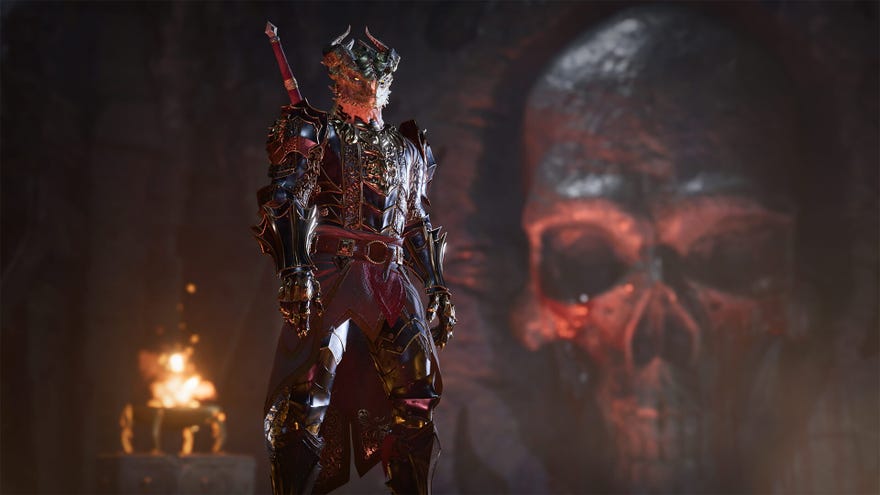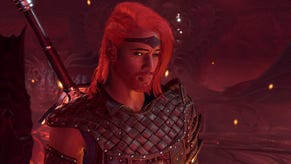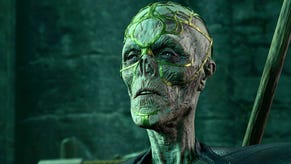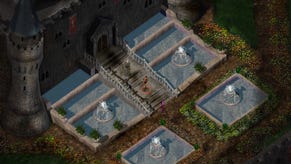Baldur's Gate 3 best builds for every class
Discover the best builds in Baldur's Gate 3
Want to know the best Baldur's Gate 3 builds? Combat is hard in Baldur's Gate 3, so you can't just waltz through it with ease. You'll need to craft the perfect build for this tough-as-nails campaign, and you'll also need to familiarise yourself with a wealth of material from the Fifth Edition of Dungeons and Dragons, which can make buildcrafting an overwhelming proposition.
In this guide, we break down the best builds in Baldur's Gate 3, covering one powerful playstyle for all 12 classes. In each build, you'll find the best subclass, race, background, and abilities that you'll need to survive on your journey across the Sword Coast.
These are the best builds in Baldur's Gate 3 right now:
- Best Barbarian build
- Best Bard build
- Best Cleric build
- Best Druid build
- Best Fighter build
- Best Monk build
- Best Paladin build
- Best Ranger build
- Best Rogue build
- Best Sorcerer build
- Best Warlock build
- Best Wizard build
Best Baldur's Gate 3 builds
Baldur's Gate 3 will frequently throw tough monsters at your party, which means you'll want to come prepared for every encounter. Choosing a build with useful skills, spells, and high stats will help with exactly that, ensuring that you and your party are prepared for whatever may come, even at the highest levels.
Combat is only one part of the game, though, and you'll also want a character who's prepared to smooth-talk their way through a conversation and avoid unnecessary bloodshed.
With a party of four at your disposal, the best Baldur's Gate 3 builds are those that hone in on a specific playstyle. You typically won't need to build a jack-of-all-trades, because someone else in your party should be able to make up for any of your shortcomings. That means you can feel free to make a charming Bard, trusting that a rage-filled Barbarian or sneaky Rogue will be able to take the lead when your custom character isn't up to the task.
Best Baldur's Gate 3 Barbarian build

- Subclass: Berserker
- Race: Half-Orc
- Background: Outlander
- Abilities: Strength, Constitution
- Proficiencies: Athletics, Animal Handling, Survival, Perception, Intimidation
The Barbarian is Baldur's Gate 3's tankiest class, able to survive the deadliest hits in combat thanks to Rage. This unique class ability allows barbarians to get advantage on Strength checks and saving throws and, more importantly, resistance to Bludgeoning, Slashing, and Piercing damage.
Subclass
The Berserker Barbarian is the best subclass for those who want to focus on massive damage. This removes a lot of the choices that you'll contend with in the Wild Magic and Wildheart subclasses, instead handing you a few infinitely usable abilities that will excel in every combat. Frenzied Strike, for example, lets you make an additional melee attack as a bonus action, while Intimidating Presence lets you inflict the Fear effect on a target to make them run away.
Aside from Feats, there aren't any other ability options to pick, making the Barbarian delightfully straightforward. At level 5, you'll get Extra Attack so that you can make another melee strike each time you take the attack action. At level 9, Brutal Critical allows you to add an extra damage die to critical hits, on top of the usual doubled dice.
You'll eventually get the Relentless Rage ability at level 11, which allows you to drop to 1HP rather than 0 HP once per Long Rest, preventing you from falling unconscious. If you've created a Half-Orc Barbarian, you get another use of this with Relentless Endurance. Unlike Relentless Rage, you get Relentless Endurance at level 1, allowing you to survive those fatal hits right from the start.
Feats
For the Berserker Barbarian, you'll want to take the following Feats: Great Weapon Master, Savage Attacker, and Durable.
Great Weapon Master allows you to make an extra melee attack after getting a critical hit or a kill. You can also opt to take a -5 penalty to attack rolls, in exchange for an additional 10 damage.
Savage Attacker lets you roll your damage dice twice and take the higher result, making it far less likely that you land a hit only to deal tiny damage due to bad rolls.
Durable is an obvious pick for a tanky Barbarian, as it makes you restore all of your HP when you take a Short Rest. That means you'll always be ready to dive into a fight on the frontlines. This Feat will also raise your Constitution score by +1.
Make sure to check out our full Baldur's Gate 3 Barbarian build for more details on how to make the most of this brutish class.
Best Baldur's Gate 3 Bard build

- Subclass: Valour
- Race: High Elf
- Background: Entertainer
- Abilities: Charisma, Dexterity
- Proficiencies: Performance, Persuasion, Deception, Sleight of Hand, Acrobatics
The Bard is Baldur's Gate 3's support class, giving you a bunch of healing spells and buffs for your allies and powerful debuffs that you can use to inflict status effects on your enemies. Bards won't typically deal a tonne of damage in a round - leave that for your Barbarians or your Fighters - but the Bard plays a vital role on any team.
They're also one of the best classes to have in your party outside of combat. With the proficiencies listed above, the Bard will be able to smooth-talk their way out of almost any scenario, ensuring that you rarely, if ever, fail skill checks during a social encounter.
Subclass
To make the Bard more battle-hardy, we recommend opting for the College of Valour subclass. This grants you Combat Inspiration, an upgrade to the Bardic Inspiration class feature that allows you to apply the Bardic Inspiration die to damage and your armor class, on top of the usual attack rolls, ability checks, and saving throws.
This subclass also grants proficiency with medium armour, Shields, and Martial weapons, allowing you to deal more damage and have a higher AC so that you're a little more defensible in combat. On top of that, you'll also get Extra Attack at level 6. That's slightly later than the Fighter and the Barbarian, but it still raises the combat efficacy of the Bard substantially.
Spells
For your spells, you're going to want a wide variety. Bane, Hold Person, and Silence, for example, allow you to control the battlfield, but Shatter and Phantasmal Force are equally important for dealing damage. There are also plenty of excellent utility spells in the Bard's repertoire. Healing Word and Cure Wounds are crucial for keeping allies on their feet, for example, while Knock will unlock any non-magical locks.
Feats
We'd recommend taking the following Feats as a Bard: Resilient, Alert, and Lucky.
At level 4, make sure to take Resilient as your first Feat. This allows you to increase an ability score by +1 and gain proficiency in that ability's saving throws. We recommend selecting Constitution for your ability score. This will give you proficiency on Con saves that occur when you're trying to maintain concentration on spells such as Bane and Silence.
At level 8, take the Alert Feat for an easy +5 bonus to initiative, ensuring that you'll appear higher in the combat initiative order. This means you'll be more likely to act early on in the round, which is great for casting buffs on allies and debuffs on enemies before they get to take a turn.
Finally, take the Lucky Feat to get three Luck Points per Long Rest. You can use these to gain advantage on any attack, ability check, or saving throw, so save them for story-critical conversations or particularly tough combat encounters.
For more details on creating a music master, take a look at our full Baldur's Gate 3 Bard build.
Best Baldur's Gate 3 Cleric build

- Subclass: Light
- Race: Gold Dwarf
- Background: Acolyte
- Abilities: Wisdom, Constitution
- Proficiencies: Religion, Insight, Medicine, Persuasion
The resident healers of D&D, Clerics are capable of bringing allies back from the brink of death. When necessary, they'll even bring them back from death itself with the Revivify spell. Their weakest aspect is that they're far less reliable damage dealers than most other classes, often resigned to slinging a Fire Bolt or casting Sacred Flame and hoping an enemy fails the saving throw. Of course, you'll also have Turn Undead to use against zombies and the like, but it's incredibly situational and won't prove truly useful until you reach Act 2.
Subclass
To enhance your combat capabilities, we'd recommend choosing the Light Domain subclass. This will give you access to far more powerful damage-dealing spells, such as Burning Hands at level 1, Scorching Ray at level 3, and Fireball at level 5. You'll also get subclass features such as Warding Flame, which allows you to use your reaction to impose disadvantage on an enemy when it attacks you or an ally.
Spells
Load up on healing spells and make them a priority at all times. Cure Wounds offers more hit points than Healing Word, but Healing Word is capable of getting a downed ally back up from a distance, so equip both. Mass Healing Word and Prayer of Healing are equally important for scenarios that get dangerously close to the dreaded Total Party Kill, so you'll want both of those on your action bar as well.
For your other spells, we'd also recommend taking Bane to make enemies roll lower, and Guiding Bolt to deal huge damage and grant advantage to the next ally who attacks the target. Silence is another excellent control spell, allowing you to prevent spells being cast in a specific area.
Feats
For your Feats, we'd recommend the following: War Caster, Lucky, Tough. You'll get these at levels 4, 8, and 12.
War Caster is the best Feat to choose first for the Cleric, as it grants advantage on saving throws made to maintain Concentration on a spell. That'll help you keep spells such as Bane and Silence active, even after taking damage.
Lucky is another excellent feat, giving you three Luck Points to use per Long Rest. You can spend a Luck Point at any time to gain advantage on an attack roll, ability check, or saving throw.
Finally, Tough will boost your max HP by +2 per level, giving you an overall boost of +24 max HP if taken at level 12. The Cleric needs to stay standing to heal others in the party, so this is crucial if you want to stay alive in some of Baldur's Gate 3's toughest encounters.
If you want to heal pals and slam enemies with Radiant damage, check out our full Baldur's Gate 3 Cleric build.
Best Baldur's Gate 3 Druid build
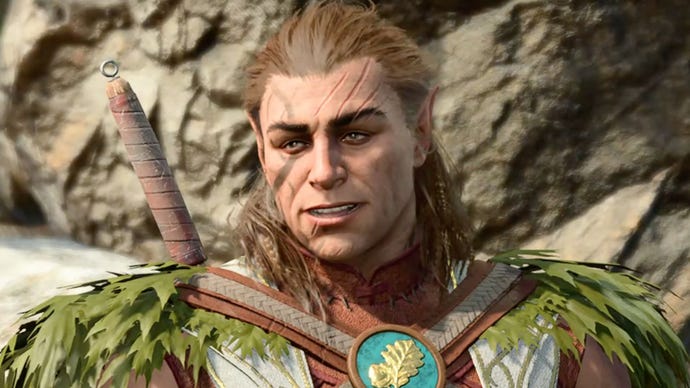
- Subclass: Circle of the Moon
- Race: Wood Elf
- Background: Folk Hero
- Abilities: Wisdom, Constitution, Dexterity
- Proficiencies: Animal Handling, Stealth, Nature, Insight, Perception, Survival
The Druid is another control/support-based class, able to restrict enemies while buffing or healing allies when needed. However, druids also have decent combat capabilities thanks to Wild Shape, a unique class mechanic that allows you to turn into a variety of animals.
Subclass
For your subclass, we'd recommend taking the Circle of the Moon to further enhance your shapeshifting abilities. One of the most important abilities will come almost instantly at level 2, as you'll get Combat Wild Shape which allows you to Wild Shape as a bonus action. Circle of the Moon Druids also get access to extra forms, such as the Bear and the Sabre-Toothed Tiger, both of which are excellent picks during combat.
Spells
Of course, you'll also need to build a spell list with plenty of healing and control spells. Healing Word and Cure Wounds are obvious picks here, as they were with the Cleric.
You'll also want to take Entangle to restrain enemies and Barkskin to protect allies. At higher levels, we'd also recommend Moonbeam, Call Lightning, and Blight for some massive damage.
Feats
Finally, you'll also need to pick three Feats as you level up. We'd recommend the following: War Caster, Lucky, and Sentinel.
War Caster is incredibly important for any spellcaster, granting advantage on saving throws to maintain concentration on a spell.
Lucky is another easy pick, giving you three Luck Points per Long Rest. You can spend a Luck Point to gain advantage on an attack roll, ability check, or saving throw, giving you a higher chance of success on the most important rolls.
Finally, Sentinel is a useful Feat for those moments when you're playing a more tanky role while Wild Shaping as a Bear or a Sabre-Toothed Tiger. When an enemy attacks an ally in melee range, Sentinel allows you to use your reaction to make an attack against that enemy. You also gain advantage on opportunity attacks, and can prevent targets hit with one from moving for the rest of its turn.
If turning into animals sounds like your sort of thing, take a look at our full Baldur's Gate 3 Druid build.
Best Baldur's Gate 3 Fighter build
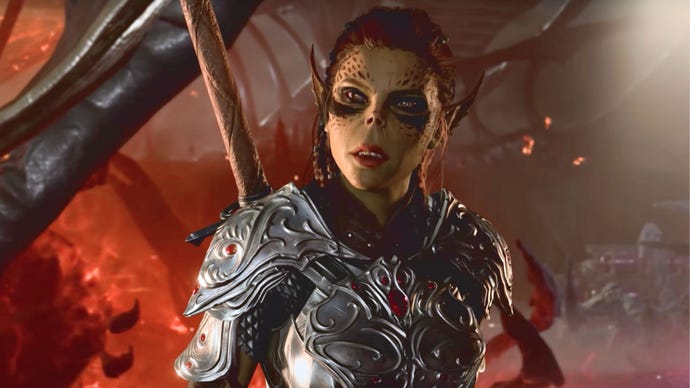
- Subclass: Battle Master
- Race: Human
- Background: Outlander
- Abilities: Strength, Constitution
- Proficiencies: Athletics, Acrobatics, Investigation, Survival, Intimidation
The Fighter is one of Baldur's Gate 3's simplest classes, and it also makes for a rather straightforward one to build. We've opted to even skip the Eldritch Knight class to keep things easy without spells, opting instead for the many manoeuvres of the Battle Master.
Fighting Style
Fighters, fortunately, don't need to make many choices. The first you'll face is your Fighting Style, a small boost to a specific attack type or your defense. You'll get this at level 1, and we'd recommend taking the Archery style for a +2 boost to ranged attack rolls.
You'll pick a second fighting style at level 10, and this choice will largely be suited to your playstyle. Great Weapon Fighting is an easy pick for those who prefer using two-handed weapons, and Look through the options to find the one best suited to your playstyle. Great Weapon Fighting, for example, is a clear pick for those who prefer using two-handed weapons. Defense and Dueling are also excellent styles for melee Fighters who want to stay armored up with only a single weapon to hold back the opposition.
Subclass
At level 3, take the Battle Master subclass. Throughout your journey, this grants you access to 7 Manoeuvres - three at level 3, two at level 7, and two at level 10. These are unique combat abilities that you can activate using an action. We'd recommend taking the following Manoeuvres (in order): Disarming Attack, Trip Attack, Goading Attack, Distracting Strike, Pushing Attack, Feinting Attack, and Precision Attack.
Feats
As a Fighter, you'll get access to four Feats: level 4, level 6, level 8, and level 12. Feats can either grant you a brand new bonus, or add +1 to two ability scores (or +2 to the same ability score). With your first Feat, we'd recommend taking an ability score improvement to bump Strength up to 20. From there, you should take the following: Athlete, Sentinel, and Tough.
Athlete increases your movement speed when prone, and it also raises your jump distance by 50%, making you far more agile than before. It also lets you increase your Strength or Dexterity by +1.
Sentinel allows you to make a reaction weapon attack when an enemy in melee range attacks an ally. You also get advantage on opportunity attacks and when you hit with an opportunity attack, the target can no longer move for the rest of its turn.
Finally, Tough is nice and simple: it grants +2 maximum HP for each level, retroactively adding +2 for all of your levels so far. This means that if you get this Feat at level 8, you'll immediately get 16 extra max HP, plus another 2 each time you level up in the future.
If slashing your way through baddies is for you, check out our full Baldur's Gate 3 Fighter build.
Best Baldur's Gate 3 Monk build
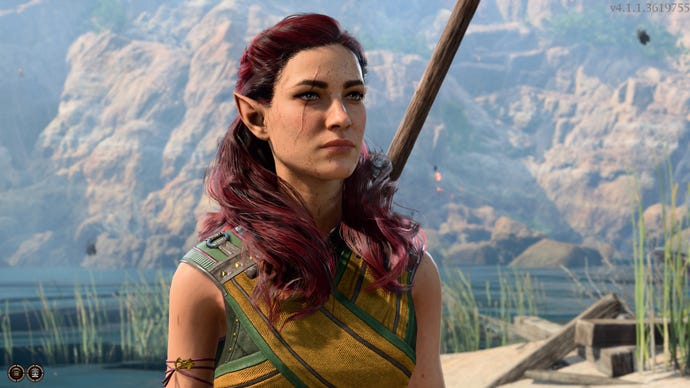
- Subclass: Shadow
- Race: Wood Elf
- Background: Charlatan
- Abilities: Dexterity, Strength
- Proficiencies: Athletics, Acrobatics, Stealth, Sleight of Hand, Deception, Perception
The Monk is a class that excels with unarmed strikes in Baldur's Gate 3. Their power comes from their Dexterity, and we've honed in on that lightfooted nature with this build, which grants boosts to Stealth and Sleight of Hand.
The Monk has a wealth of abilities, but you won't need to make a bunch of choices. Instead, you'll have access to them all at once, making it one of the most versatile classes in the game. For example, level 1 gives you three Martial Arts abilities (Dextrous Attacks, Deft Strikes, and Bonus Unarmed Strikes), while Step of the Wind lets you Dash or Disengage as a bonus action. You'll also get Deflect Missiles at level 3 (reduce damage from ranged attacks), Slow Fall at level 4 (use a reaction to gain resistance to falling damage), and Extra Attack at level 5.
Monks also have access to Ki Points, which you can expend to use even more abilities! These include Patient Defence, which you can use to impose disadvantage on an attacking enemy, and Stunning Strike, which you can use to potentially Stun an enemy. You get Ki Points back on a Short Rest.
Subclass
The biggest choice you'll have to make, then, is your subclass. We'd recommend taking the Way of Shadow subclass, which further enhances your Stealth capabilities.
This will help you bag easy surprise rounds in combat, but it gets really strong once you reach level 6 and get Shadow Step. This allows you to use a bonus action to teleport up to 18m, and also grants advantage on your next melee attack. At level 11, you'll get Shadow Strike, which lets you teleport directly behind an enemy to strike them with psychic damage.
Feats
Of course, you'll also need to choose some Feats. Monks get three Feats - one at level 4, level 8, and level 12. The best Feats for the Monk are: Lucky, Mobile, and Sentinel.
Lucky is a simple one: each Long Rest, you get three Luck Points which you can use to gain advantage on a saving throw, ability check, or attack roll as a reaction. This allows you to see whether you succeed on something and reroll if needed on a failure.
Mobile makes the Monk even more agile, increasing your movement speed and preventing opportunity attacks if you move after making a melee attack.
Finally, Sentinel lets you use a reaction to attack an enemy in melee range when they attack an ally. When you make opportunity attacks against an enemy, you'll also prevent that foe from moving further away for the rest of its turn.
Develop your Ki powers to their maximum potential with our full Baldur's Gate 3 Monk build.
Best Baldur's Gate 3 Paladin build

- Subclass: Oath of Vengeance
- Race: Deep Gnome
- Background: Soldier
- Abilities: Strength, Charisma
- Proficiencies: Athletics, Insight, Intimidation, Persuasion
The Paladin is your typical tank, able to charge into combat headstrong and soak up enemy attacks while defending the party. However, they can't just burst into every room swinging - Paladins are sworn to a Sacred Oath, and certain actions will break that Oath and change your subclass.
Subclass
For this build, we'd recommend the Oath of Vengeance subclass. The Oath of Vengeance is held to two tenets: Fight the Greater Evil and No Mercy for the Wicked. If you break these, you will become an Oathbreaker, changing your class features to fit a different subclass, so make sure to have these two truths dictate your actions at all times.
Fighting Style
Like Fighters, Paladins get to choose a Fighting Style. We'd recommend taking Defence or Protection - Defence boosts your AC by +1, while Protection allows you to use a Shield to impose disadvantage on an attack against your allies when you are within 1.5m. This largely comes down to whether you want more defence for yourself, or whether you want to keep your allies up.
Spells
Paladins have a varied spell list, giving you access to damage, control, and healing. Take Cure Wounds for when you or your allies need healing in a pinch, and consider also grabbing Bless to spread some buffs throughout your party. Compelled Duel is an obvious choice, allowing you to convince an enemy to attack solely you and ignore the other members of your party. Similarly, Command lets you order an enemy to freeze, run away, or drop their weapon.
The Paladin also gets various Smite spells that'll buff your melee attacks with extra damage and effects. We like Thunderous Smite, which deals +2d6 thunder damage, pushes enemies away, and can make them prone, and Blinding Smite, which does +3d8 damage and can blind enemies.
Feats
For your Feats, we'd recommend: Tough, Sentinel, and Shield Master.
Tough is a simple yet effective Feat, granting +2 maximum HP for each previous level, plus 2 more HP each time you level up. It makes the Paladin even more tanky, ensuring that you can stay standing on the frontlines.
Sentinel is perfect when defending allies, allowing you to make a reaction attack when an enemy in melee range attacks an ally. You can also prevent enemies from moving for the rest of their turn on a successful opportunity attack.
Shield Master grants you a +2 bonus to Dexterity saving throws while using a Shield, giving you some extra protection against powerful AoE spells such as Fireball. You can also use your reaction to weaken spells that force you to make Dexterity saving throws, so that you only take half damage on a failed save and no damage on a successful save.
To learn more before swearing your Oath, check out our full Baldur's Gate 3 Paladin build.
Best Baldur's Gate 3 Ranger build
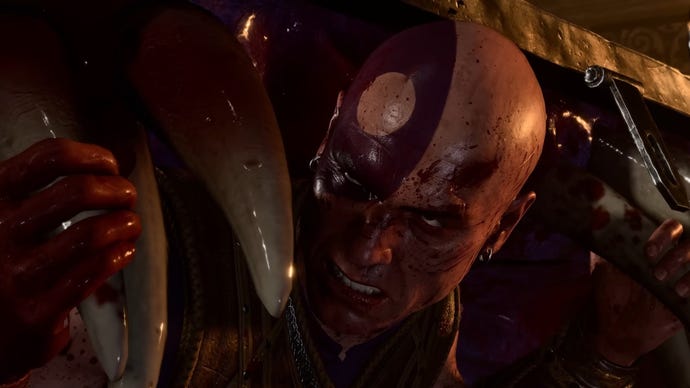
- Subclass: Gloom Stalker
- Race: Wood Elf
- Background: Charlatan
- Abilities: Dexterity, Wisdom
- Proficiencies: Arcana, Deception, Insight, Investigation, Nature, Perception, Sleight of Hand, Stealth
The Ranger is the classic archer and monster slayer in Baldur's Gate 3, slinging arrows from afar at their chosen enemy before cloaking back into the shadows. Like the Rogue, Rangers are also incredibly well-suited to a stealthy playthrough, and we'll hone in on that even further with our build.
At level 1, you must make two choices: your Favoured Enemy and your Natural Explorer. You'll then get to pick another of each at level 6 and level 10.
Favoured Enemy
For your first Favoured Enemy, take Mage Breaker to gain proficiency in Arcana and unlock the True Strike spell, which you can cast to gain advantage on your next attack roll. At level 6, take Bounty Hunter to get proficiency with Investigation and to give enemies disadvantage when they make the saving throw against your Ensnaring Strike attack. For your final pick at level 10, take Sanctified Stalker for Religion proficiency and the Sacred Flame spell.
Natural Explorer
For your first Natural Explorer ability, take Wasteland Wanderer: Fire to get resistance to Fire damage. That'll make you take half damage from some of the most powerful spells in Baldur's Gate 3, such as Fireball and Wall of Fire. Take Wasteland Wanderer: Poison at level 6 for resistance to Poison damage, and Wasteland Wanderer: Cold at level 10 for resistance to Cold damage.
At level 2, we'd reommend taking the Archery Fighting Style for an additional +2 to all ranged attack rolls. It's an obvious pick, perfect for striking from afar with your trusty bow.
Subclass
For your subclass, we'd recommend taking the Gloom Stalker Ranger. The Gloom Stalker gets the powerful Umbral Shroud ability at level 3, allowing them to become invisible as an action whenever they are obscured by shadow. You also get access to Superior Darkvision (see in the dark within 24m) and Dread Ambusher, which grants you a +3 bonus to initiative and increased movement and damage on the first turn of combat.
The other class abilities you'll get as a Gloom Stalker are Iron Mind at level 7, granting proficiency in Wisdom and Intelligence saving throws, and Stalker's Flurry at level 11, allowing you to make another weapon attack for free whenever you miss a strike.
Spells
Of course, a Ranger also needs to choose their spells. We'd recommend keeping True Strike, Misty Step, and Fear prepared as you get them. On top of those, take Ensnaring Strike, Cure Wounds, and some mobility-focused spells such as Longstrider and Enhance Leap. Pass Without Trace is another obvious pick for a stealth-oriented playthrough, but we'd also recommend Lightning Arrow for when you really need some big damage.
As a Gloom Stalker, you'll also get access to some useful combat spells. Misty Step comes at level 5, allowing you to teleport up to 18m and quickly reposition in a fight. At level 9, you get Fear, which you can use to make enemies Fearful. This forces them to run away from your character, providing some much-needed crowd control in tough battles.
Feats
Finally, we'd recommend taking the following three Feats: Sharpshooter, Lucky, and Tough.
Sharpshooter negates penalties that would usually occur when firing at enemies from a lower height. You also get the option to go all-in on attacks, which gives a -5 penalty to your attack roll in exchange for an additional 10 damage on a successful hit.
Lucky grants three Luck points per Long Rest, allowing you to gain advantage on an attack roll, ability check, or saving throw whenever it might be needed.
Finally, Tough is an obvious choice to get some extra health, granting +2 maximum HP for each character level. If you take this at level 12, that'll grant an immediate bump of 24 to your hit point maximum.
Check out our full Baldur's Gate 3 Ranger build to learn more about this sharpshooting playstyle.
Best Baldur's Gate 3 Rogue build
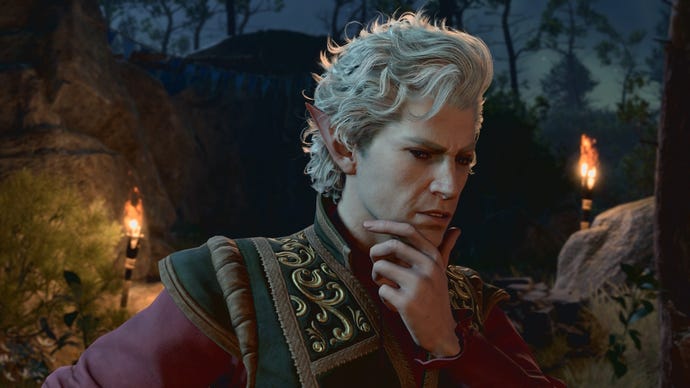
- Subclass: Thief
- Race: Wood Elf
- Background: Charlatan
- Abilities: Dexterity, Constitution
- Proficiencies: Athletics, Acrobatics, Deception, Insight, Investigation, Perception, Stealth, Sleight of Hand
The Rogue is the sneakiest class in Baldur's Gate 3, and they get massive damage boosts thanks to their Sneak Attack ability. This makes them one of the best damage dealers in the game, and their Cunning Action ability that allows them to Dash, Disengage, or Hide as a bonus action also makes Rogues incredibly versatile in combat.
You also get some great damage-mitigating effects later on, such as the Uncanny Dodge reaction, which lets you halve damage from an attack, and Evasion, which allows you to take no damage from a spell if you pass its Dexterity saving throw and half damage if you fail.
Subclass
For your subclass, we'd recommend taking Thief, which grants you a second bonus action. This enables you to use any of the Cunning Action abilities twice in a single turn.
Of course, this also means that you could make two bonus action attacks per turn if you are dual wielding one-handed weapons. This can make you far more nimble or far stronger, depending on whether you need to run from a scenario or want to pile on the attacks.
Feats
We'd suggest taking the following Feats: Dual Wielder, Alert, and Tough. You'll unlock these at level 4, 8, and 12 respectively.
Dual Wielder is the best to get early on, as it allows you to use Two-Weapon Fighting with weapons that aren't Light and grants a +1 AC bonus if you have a weapon equipped in each hand. This gives you access to more powerful weapons with which to use your bonus action attacks, rather than sticking to light weapons, which are generally weaker.
Rogues benefit when they're high in the initiative order, as you'll want to take full advantage of any surprise rounds that you get from stealthing. Alert ensures that you'll generally be near the top with a +5 to initiative rolls.
Finally, Tough will grant 2 extra max HP per level. We'd recommend taking it at level 12, granting you an immediate +24 max HP boost to help deal with the difficult encounters to come towards the end of your adventure.
Learn more about sneaking and stabbing from the shadows with our Baldur's Gate 3 Rogue build.
Best Baldur's Gate 3 Sorcerer build

- Subclass: Draconic Bloodline
- Race: Half Elf
- Background: Entertainer
- Abilities: Charisma, Constitution
- Proficiencies: Acrobatics, Arcana, Performance, Persuasion, Stealth
The Sorcerer derives their magical power from their bloodline, unlike Baldur's Gate 3's other magic classes which rely on pacts and spell schools. Thanks to the ability to alter their spells via Metamagic, Sorcerers are also flexible magic-users who can also serve as the face of a party thanks to their Charisma-based skillset.
Subclass
The first choice you'll have to make is your subclass, and we'd recommend taking Draconic Bloodline. This gives you an extra +1 to your max HP each level, and also grants a Draconic Ancestry. You can choose one that aligns with any element, but we'd recommend Red (Fire) to get the Burning Hands spell early on.
Spells
Since the Sorcerer is a full spellcaster, you'll need to come prepared with the best spells at all times.
For your Cantrips, we'd recommend taking a range of utility and damage-based spells, including: Friends, Mage Hand, Fire Bolt, Shocking Grasp, Poison Spray, and Blade Ward. For your higher level spells, make sure to grab some defensive spells, such as: Expeditious Retreat, Mage Armor, Shield, and Counterspell.
From there, you can then start piling on some damage spells. We'd recommend: Thunderwave, Magic Missile, Scorching Ray, Fireball, Lightning Bolt, and Chain Lightning.
Metamagic
As a Sorcerer, you'll also get to choose a total of four Metamagic options - two at level 2, one at level 3, and one at level 10. Metamagic abilities are changes that you can toggle when casting spells, giving you access to more variety during combat. We'd recommend taking Twinned Spell, Distant Spell, Heightened Spell, and Quickened Spell.
Twinned Spell allows you to choose additional targets for spells, which comes in handy for heavy-hitting spells such as Fire Bolt. Distant Spell increases the range of your spells by 50%, allowing you to hit from much further away. For spells that force opponents to make saving throws to resist the effects, Heightened Spell will give them disadvantage on their first saving throw. Finally, Quickened Spell allows you to cast a spell with a bonus action, rather than a full action.
Feats
Of course, you'll also need to choose your Feats. The Sorcerer gets three Feats, and we'd recommend grabbing the following: Spell Sniper, War Caster, Alert.
Spell Sniper is an excellent pick for full spellcasters, as it reduces the number that you need to roll for a critical hit by 1, from 20 to 19.
War Caster is equally important, making it an obvious second Feat. It grants advantage on saving throws to maintain concentration on a spell, giving you a greater chance to continue any control effects while taking damage.
Finally, Alert will raise your initiative roll by +5. This should hopefully put you higher in the combat order, so that you can start blasting at enemies before they get a turn in combat.
If a bloodline-enhanced mage sounds like your kind of spellcaster, take a look at our full Baldur's Gate 3 Sorcerer build.
Best Baldur's Gate 3 Warlock build
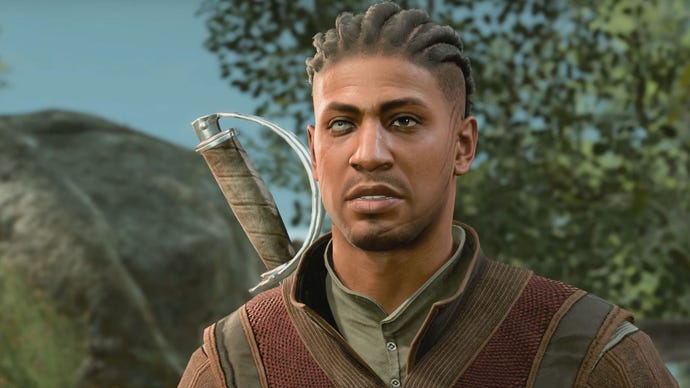
- Subclass: Fiend
- Race: Githyanki
- Background: Charlatan
- Abilities: Charisma, Constitution
- Proficiencies: Arcana, Deception, Intimidation, Sleight of Hand
Warlocks are another Charisma-based spellcaster who gain supernatural power from a Pact with a mysterious patron. They're ideal for blasting baddies from a distance with spells amplified by their fiendish Eldritch Invocations.
Subclass
You'll choose your subclass at level 1, and we'd recommend taking the Fiend. This is largely because of the Dark One's Blessing passive, which grants you temporary hit point equal to your Charisma modifier + your level whenever you kill an enemy. That'll provide an invaluable source of HP to keep you alive during combat.
Eldritch Invocations
At level 2, you'll choose your first two Eldritch Invocations. These are more passive bonuses that are unique to the Warlock, and they'll offer a range of boosts from skill proficiencies to major changes to the Eldritch Blast cantrip. You'll get to choose another Eldritch Invocation at levels 5, 7, 9, and 12, meaning that you'll finish the game with a total of six.
We'd recommend taking the following Eldritch Invocations: Agonizing Blast, Repelling Blast, Armour of Shadows, Book of Ancient Secrets, Minions of Chaos, Lifedrinker.
Agonizing and Repelling Blast will add damage and a knockback effect to your Eldritch Blast, which acts as your primary damage-dealing Warlock spell. Book of Ancient Secrets and Armour of Shadows will give you some spells that you can cast for free without expending Warlock spell slots. Minions of Chaos will add Conjure Elemental to your spell list, and Lifedrinker will add Necrotic damage to your melee attacks.
Pact
At level 3, you must choose a Pact, and we'd recommend taking the Pact of the Blade. This is a melee-focused Pact that allows you to summon a melee weapon and automatically gain proficiency with it while its equipped.
At level 5, you'll get Extra Attack with your Pact weapon, and this pairs perfectly with the additional damage granted by the Lifedrinker Eldritch Invocation.
Spells
Of course, the Warlock also needs to choose a range of spells. To start, you should absolutely take Eldritch Blast as a cantrip, as its one of the unique spells available to the Warlock and an excellent ranged attack that doesn't take a spell slot. We'd also recommend taking the Friends, Blade Ward, and Mage Hand cantrips.
For your higher level spells, diversify with a range of damage-based options, such as Burning Hands, Scorching Ray, Fireball, and Blight. We'd also recommend taking Hellish Rebuke, which you can cast as a reaction when you take damage. Follow these offensive spells up with some control spells, such as Hex, Blindness, Hold Person, Hunger of Hadar, Banishment, and Hold Monster. Finally, take the Circle of Death spell when you reach level 12, as this will be your strongest AoE spell as a Warlock.
Feats
You'll also get to take three Feats as a Warlock, and we'd recommend the following: War Caster, Resilient, and Lucky.
War Caster and Resilient are both excellent picks for the Warlock, as you'll use lots of Concentration spells. If you take damage while concentrating on a spell, you'll have to make a Constitution saving throw to see whether you maintain the spell or it fizzles out. War Caster will give you advantage on these rolls, and Resilient (Constitution) will add your proficiency bonus. These effects will combine to make you far more likely to pass these saving throws.
Lucky grants you three Luck Points per Long Rest, and you can use these Luck Points to gain advantage on any attack roll, ability check, or saving throw. This is one of the most versatile Feats, making it an easy pick for any class.
Learn more about the fiendish pacts that you can enter with our full Baldur's Gate 3 Warlock build.
Best Baldur's Gate 3 Wizard build
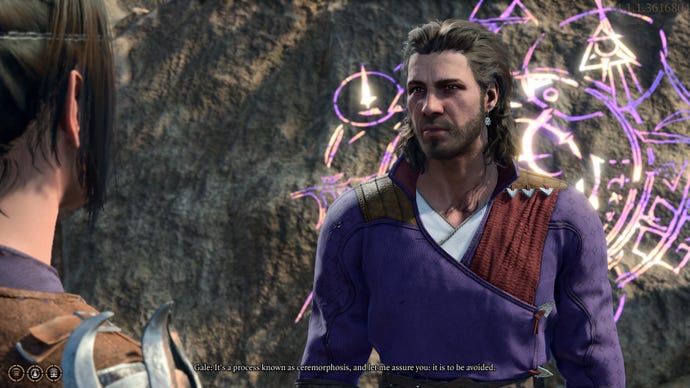
- Subclass: School of Evocation
- Race: Forest Gnome
- Background: Sage
- Abilities: Intelligence, Constitution
- Proficiencies: Arcana, History, Investigation, Insight
Wizards are the classic spellcasters of Baldur's Gate 3, but they can also be quite overwhelming for beginners. That's because, rather than choosing between various class abilities, you mostly just need to choose spells. A lot of spells.
Subclass
Your subclass will improve a specific school of spells, which means you'll want to specialise on a specific type fairly early on. For this build, we'd recommend choosing the School of Evocation, which will improve most of your damage-based spells, such as Scorching Ray and Burning Hands. Fireball, in particular, will see great improvements as the Sculpt Spells feature of this subclass allows allies to automatically succeed on saving throws caused by your spells and take no damage from them.
Spells
As a Wizard, you'll get a few Cantrips (free spells that don't require a spell slot) and a list of prepared spells of a higher level. You can change your prepared spells at any time outside of combat, but there are a few go-tos that we recommend you always have available on your action bar.
For your Cantrips, we'd recommend Fire Bolt, Poison Spray, Mage Hand, and Minor Illusion. This gives you a couple of damage spells to use at any time, along with some utility spells that might help more in roleplay encounters. Mage Hand can help you move or steal objects, for example, while Minor Illusion will distract NPCs while you sneak by.
For your spells, you should take Burning Hands, Magic Missile, Mage Armour, Shield, Scorching Ray, Misty Step, Fireball, Haste, Counterspell, Greater Invisibility, Cone of Cold, and Chain Lightning. These are listed from lowest to highest spell level, but we'll break down groups of spells based on what they'll do below.
Firstly, you're going to want plenty of damage-based spells as an Evocation Wizard. Scorching Ray, Fireball, and Chain Lightning give you access to ranged damage options, so that you can sit back and blast enemies from afar.
For some damage spells that are more suited to melee range, we've got Burning Hands and Cone of Cold. These are best used when enemies ambush you and get close before you're able to get away.
Wizards don't typically wear armor, so we'd recommend Mage Armour to increase your AC to 13 + your Dex modifier. Mage Armour lasts until you take a Long Rest, so make sure to have it cast at all times. Shield is a reaction spell that you can use to further increase your AC by +5, and Counterspell is another reaction that you can use to prevent an enemy's spell from being cast.
Haste is a buff that you can cast on yourself or an ally to grant them an extra action and more movement speed. If you find yourself in a bad position, either because you can't see your enemies or need to escape their attacks, use Misty Step to teleport up to 18m as a bonus action. Finally, whether you're in combat or sneaking around in city streets, Greater Invisibility allows you to hide from enemies. Unlike the lower-level version of this spell, Greater Invisibility also allows you to take actions without breaking your invisibility, making it perfect for hidden attacks during combat.
Feats
You'll also get three Feats as a Wizard, which unlock at levels 4, 8, and 12. We'd recommend the following Feats: War Caster, Resilient, and Tough.
Like many other spellcasters, War Caster and Resilient (Constitution) will combine to give you advantage and proficiency on Constitution saving throws made to maintain concentration on a spell.
The Wizard gets the lowest maximum HP in Baldur's Gate 3, so Tough is also an obvious pick to boost your health pool substantially. This will grant +2 max HP each time you level up, retroactively adding those hit points for previous levels. Upon reaching level 12, that'll mean you get an additional 24 HP total, which is enough to help you withstand hits that might otherwise have proved fatal.
To embrace your potential and become the strongest spellcaster around, check out our full Baldur's Gate 3 Wizard build.
That wraps up our guide on the best builds in Baldur's Gate 3. If you want to try out one of these builds but are already deep into a playthrough, don't forget that you can respec your character. If you're wondering which of these is better for your preferred playstyle, take a look at our list of Baldur's Gate 3 classes to learn more about them all. If you've settled on a build and have some more love-focused goals, check out our guide on Baldur's Gate 3 romance to discover more about relationships with your Baldur's Gate 3 companions.
Disclosure: Former RPS deputy editor Adam Smith (RPS in peace) now works at Larian and is the lead writer for Baldur's Gate 3. Former contributor Emily Gera also works on it.
